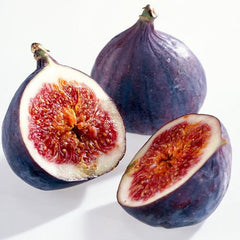What Makes a Perfume Aquatic?
Click For Affordable Inspired Perfume Alternatives
Perfume is a timeless art form, capturing the essence of nature, emotion, and memory in a delicate bottle. Among the many fragrance families, aquatic perfumes have gained remarkable popularity for their fresh, clean, and invigorating scent profiles. These fragrances evoke the feeling of being near the ocean, a gentle breeze on a summer day, or the crispness of a clear stream. But what exactly makes a perfume aquatic? Understanding the ingredients, composition, and design behind aquatic fragrances can help you choose the perfect scent that transports you to serene seaside landscapes or refreshing aquatic environments.
What Makes a Perfume Aquatic?
At its core, an aquatic perfume is characterized by its fresh, clean, and watery scent profile. These fragrances often aim to mimic the invigorating qualities of water and the ocean, creating a sense of openness, clarity, and vitality. The distinctive character of an aquatic perfume is achieved through a careful blend of ingredients, scent layers, and olfactory techniques that evoke the sensation of water or aquatic environments. But what exactly are these ingredients, and how do perfumers craft such fragrances? Let's delve into the elements that define an aquatic perfume.
Key Ingredients That Define Aquatic Perfumes
The essence of an aquatic fragrance lies in its ingredients, which are carefully selected to produce the characteristic watery and fresh notes. These ingredients can be natural or synthetic, and their combination results in the signature scent of aquatic perfumes.
- Seaweed and Marine Notes: These ingredients imitate the scent of the ocean, bringing a salty, mineral quality to the fragrance. Synthetic marine notes are commonly used to replicate the smell of sea spray or ocean water, offering a fresh and bracing aroma.
- Aquatic Notes: These are specially crafted synthetic compounds designed to evoke the feeling of water. They often have a clean, ozonic, and slightly watery scent that forms the base of aquatic fragrances.
- Citrus Notes: Bergamot, lemon, grapefruit, and mandarin are frequently used to impart a bright, zesty freshness that complements the watery theme.
- Green Notes: Fresh-cut grass, green leaves, and other vegetal elements add vibrancy and a sense of nature's purity.
- Ozonic and Airy Notes: These synthetic scents create an airy, breezy feeling, reminiscent of a fresh wind or ocean breeze.
- Fruity and Floral Accents: Light fruits like pear or apple and delicate florals such as lily of the valley or jasmine can add softness and complexity to aquatic fragrances.
The Composition of Aquatic Fragrances
The overall structure of an aquatic perfume is designed to evoke the sensation of water through layered notes. Typically, these fragrances follow a similar composition pattern:
- Top Notes: Light, volatile scents that create an initial burst of freshness. Citrus and ozonic notes dominate here, setting the tone of the fragrance.
- Heart (Middle) Notes: These form the core of the scent and often include marine, green, and floral notes that give depth and character to the fragrance.
- Base Notes: Subtle, lasting notes that add depth and longevity. Mineral accords, musk, or woody elements can be used to anchor the fragrance.
This layered approach allows the perfume to unfold naturally, reminiscent of water's movement and the changing atmosphere near the sea or a fresh stream.
The Olfactory Experience of Aquatic Perfumes
What sets aquatic fragrances apart from other scent families is their ability to evoke specific sensations and environments. When wearing an aquatic perfume, you might experience:
- Freshness: An immediate feeling of cleanliness and vitality, perfect for summer or daytime wear.
- Openness and Space: The scent creates an impression of vastness, like standing by the ocean or in an open meadow.
- Cooling Effect: Many aquatic fragrances have a cooling sensation, making them ideal in warm weather or after physical activity.
- Clean and Minimalist Vibe: These perfumes often have a sleek, understated elegance suitable for everyday use.
In essence, aquatic perfumes aim to capture the purity and serenity of water, offering a sensory escape into nature's most refreshing environments.
Designing an Aquatic Perfume: The Creative Process
Creating an aquatic fragrance involves carefully balancing ingredients to produce a scent that feels both natural and captivating. Perfumers often use the following techniques:
- Emphasizing Freshness: Using high-quality citrus and green notes to establish an initial crispness.
- Incorporating Marine and Ozonic Notes: Synthetic compounds mimicking water or sea spray are essential to evoke the aquatic theme.
- Maintaining Lightness: Avoiding heavy or overpowering ingredients to preserve the airy and transparent quality of the fragrance.
- Layering Subtle Accords: Combining mineral, floral, and fruity notes to add complexity without losing the fresh essence.
Overall, the goal is to craft a scent that feels natural, invigorating, and versatile, suitable for various occasions and seasons.
Popular Examples of Aquatic Perfumes
Many iconic fragrances exemplify the aquatic style, each offering a unique interpretation of water-inspired scents. Some notable examples include:
- Davidoff Cool Water: One of the most famous aquatic fragrances, known for its fresh, clean aroma with marine and citrus notes.
- Acqua di Giò by Giorgio Armani: A sophisticated blend of citrus, marine, and woody notes that evoke the Mediterranean Sea.
- Issey Miyake L'Eau d'Issey: Features water and floral accords with a light, transparent quality.
- Versace Man Eau Fraîche: Combines aquatic notes with a hint of spice and citrus, offering a modern take on aquatic freshness.
These fragrances have become classics because they successfully capture the essence of water while offering a versatile and appealing scent profile.
Conclusion: The Appeal of Aquatic Perfumes
In summary, what makes a perfume aquatic is its ability to evoke the refreshing, pure, and invigorating qualities of water and aquatic environments. Through the skillful use of marine, ozonic, citrus, and green notes—both natural and synthetic—perfumers craft scents that transport wearers to breezy beaches, clear streams, and open oceans. Whether you seek a fragrance to energize your day or a subtle scent that embodies cleanliness and vitality, aquatic perfumes offer a versatile and timeless option. Understanding the ingredients and composition behind these fragrances empowers you to select the perfect aquatic scent that resonates with your personal style and connection to nature.
Buy Perfumes - Best Online Retailers
Click For Affordable Inspired Perfume Alternatives
Click For The Best Niche Perfumes & Decants
Pheromone Perfumes - Confidence, Attraction & Appeal - Click For More
Home Fragrances & Candle Warmers - Click To Scent Up Your Spaces Today!



